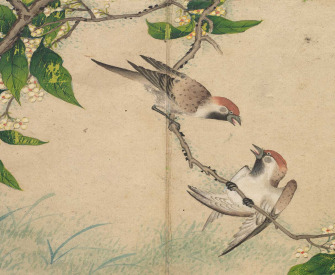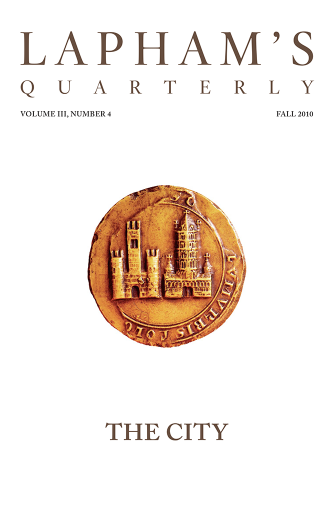Every house: temple, empire, school.
—Joseph Joubert, 1800
St. George and the Dragon, by Lewis Carroll, 1875. © The Metropolitan Museum of Art, Gilman Collection, Purchase, Ann Tenenbaum and Thomas H. Lee Gift, 2005.
If you play that game where you pick your porn-star moniker by using the name of the street of your first childhood home as your first name and your real middle name as your last, I’d be Clark Samuels. John S. Waters Jr., 1401 Clark Avenue, Lutherville, Maryland. My first house. My first arena. My launching pad to creative filth.
Does anyone ever forget the first room you were allowed to make your own? As a kid, I was lucky enough to have my own bedroom far enough away from my parents or brother and sisters that spying on me was nearly impossible. All I ever wanted to be was the rock-and-roll king. When I first saw Elvis on The Ed Sullivan Show in 1957, twitching and moaning “Heartbreak Hotel,” I was almost eleven but immediately knew I was gay. Then the decorator gene kicked in. Down from my walls came the family’s tasteful Audubon prints and up went glossy head shots of the Everly Brothers, Tab Hunter, and the Platters (one of whom sported a pencil mustache). I nagged my mom and dad into buying me a reel-to-reel tape recorder so I could be an early pirate and tape all the hits off the radio without having to wait to buy them. Then I’d play these rockabilly and rhythm-and-blues numbers over and over as I danced around my room lip-synching, gyrating, and talking to myself. Finally I had a think tank.
My parents were probably concerned, but they threw caution to the wind and built me a little stage at the top of the second-floor steps on a landing outside my bedroom so I could act out whatever show-business fantasies I was entertaining. This tiny theater even had curtains that I obsessively opened and closed while internally announcing my own insane one-man shows to my yet undeveloped public. My mom started a “costume box” where her friends donated old clothes I could use for my self-indulgent performances. I immediately imagined myself dressed as Robin Hood’s enemy, the Sheriff of Nottingham, or Captain Hook himself, but I also tore the women’s clothes apart and draped the ratty rags around my shoulders, pretending I was a contestant who was just handed the prize mink coat from Bess Myerson on my favorite TV show, The Big Payoff. Confused neighborhood children and a very indulgent relative, Aunt Rachel, would watch as I threw myself around the stage, mouthing Elvis lyrics and swiveling my hips in pitiful fits of exhibitionism. Something was the matter with me. Yet having this creative little safe area in my childhood home gave me the confidence to grow into later neurotic maturity and happiness.
The acre of suburban lawn surrounding our house became like the Paramount lot for my feverish theatrics. I graduated to building “spook houses” in the family garage out back. Inspired by the ride-through Trimper’s Haunted House in Ocean City, Maryland, designed by Bill Tracy (and it’s still there in operation), I remembered excitedly wheeling through this attraction in these rickety little coffin-shaped cars and dreaming of befriending the crudely built, motorized corpses, cannibals, and skeletons who lived inside. I fantasized the cars breaking down, the panicked, chickenshit children screaming, bolting from their seats, tripping over live wires, and electrocuting themselves. I wanted to take this imagined fear, this frightened happiness, back to my own house where I knew I could preserve, protect, and stylize it on my own adolescent terms.
My parents again allowed my creative juices to flow. I printed up handbills advertising “John Waters’ Horror House” and taped them to telephone poles along our street. I put flyers inside front doors and spread the word to the few neighborhood children who hadn’t been scared away by my past theatrical shenanigans. Inside the garage, I’d hang up demented Halloween decorations of skeletons and witches and light them with flashlights; submerge dry ice in water to get the bubbly witch cauldron feel; rub fake blood on rubber body parts I got at the joke shop; and place bowls of wax candy lips, teeth, and mustaches around for decor. But I knew that wasn’t enough to really scare anybody. I needed to make it dangerous. At the last minute, when the customers were lining up outside, I turned off all the flashlights and installed little trip wires that would be invisible in the dark. Falling down would add a new thrill to my horror house. It might hurt, but you’d always remember the experience and, more important, you’d have to tell somebody about it.
I would rush outside, take the first customer’s twenty-five-cent admission, say, “Hold on a second,” and then, since I was the Horror House’s only employee, run back inside and finally yell, “Okay, you can come in now.” The first unlucky kid would enter in the pitch blackness and I’d immediately squirt him or her with a violent blast of chemical powder shot loudly from a fire extinguisher my dad let me borrow from our kitchen. Then I’d kick the person in the shins. Hard. They’d scream, and the kids in line outside would hear the cries of distress, which only added to their anticipation and excitement. Naturally, the patron inside would try to escape me, and that’s when they’d trip over my wires and fall. But you know what? They loved it! They’d laugh, get right back up, grope their way through the rest, fall several more times, and then race back outside and get in line all over again to give me their money. I’m still doing the same thing in my career today, aren’t I? All because my mom and dad allowed me to turn our first house into the demented childhood amusement park that lived in my brain. Even last week I drove by that house, and it still looks pretty much the same to me. I hope some other weird little boy is being encouraged inside. A child’s lunacy is a terrible thing to waste.


